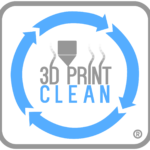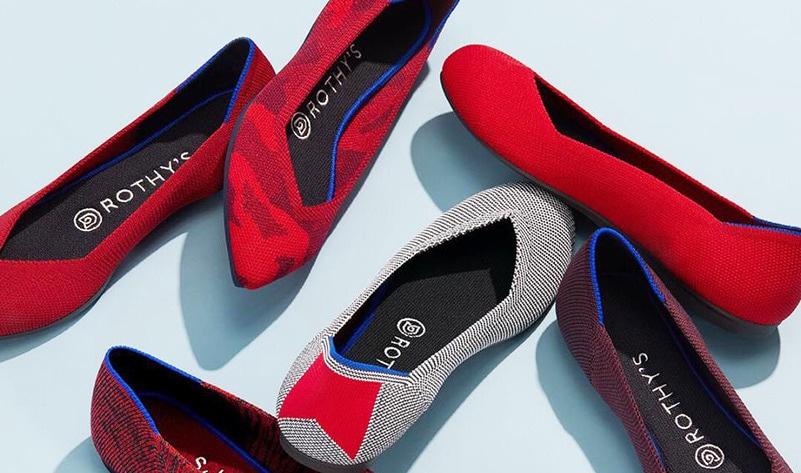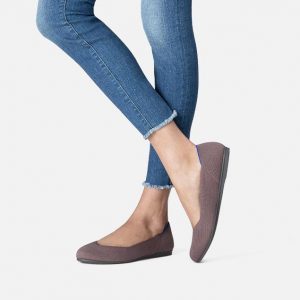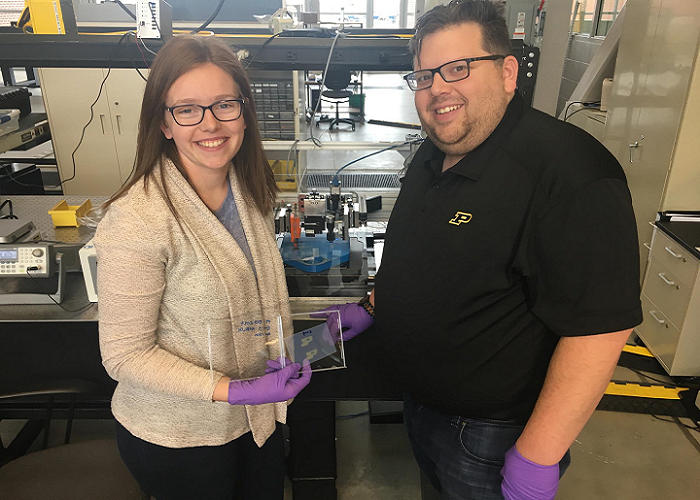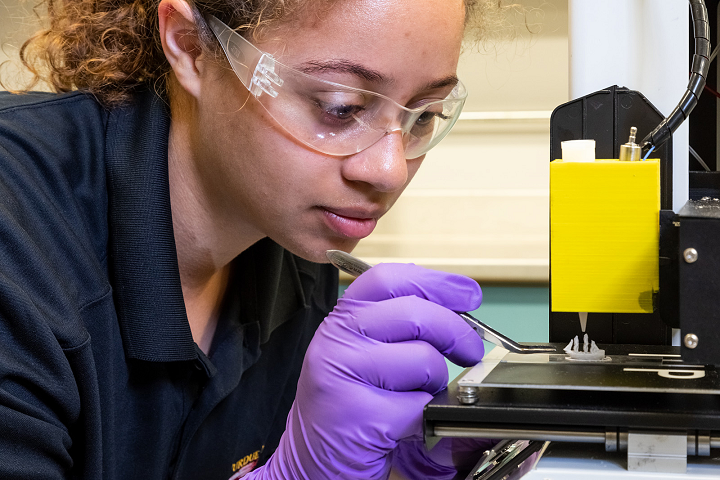Lorena James is a Sustainability Innovator within the Additive Manufacturing Industry. She is the founder of Z SPools, an award-winning Lake Erie-based startup that provides 3D solutions for invasive species. They manufacture a patent ending 3D printing filament out of zebra and quagga mussel shells – two of the most prominent invasive species in the Great Lakes. We’ve written about her great project before.
Give us a brief summary of your life experience and college experience that has gotten you to this point.
My senior year of high school I enrolled in an Entrepreneurial Studies course during which I was introduced to the world of entrepreneurship. Every month, I worked with a team of students to serve as consultants, solving issues faced by local entrepreneurs in my native Buffalo, NY. From golf ball manufacturing to urban farming, I learned a lot about the diverse experiences of entrepreneurs and the passion that guides them in their work. This inspired me to engage in my own entrepreneurial path for my senior thesis project. I was recommended by my entrepreneurial studies teacher to register for a competition called Erie Hack, a pitch competition with the goal of solving water quality and other environmental issues in cities around Lake Erie. This competition propelled me into my work with Z Spools. Through the ideation process up until the pitch day, I worked closely with mentors at my high school and the University at Buffalo. In the end, I won the high school portion of the competition and continued to work with Z Spools as I began the college career at Davidson College. Now, I continue my entrepreneurial path with the many resources available at Davidson including The Hub Entrepreneurial Center, Davidson’s Makerspace, and the Avinger Scholarship. Such work had inspired me to declare an Environmental Entrepreneurship major.
What makes you passionate about the environment?
My family has always been close to nature. I grew up tending to a lush backyard garden, fishing in the Finger Lakes, and hiking in the Niagara River Gorge. In addition, interest in my Native ancestry inspired my study under a local Iroquois medicine man. He owned a shop in my native Buffalo, NY where he sold various herbal remedies. I learned a lot about methods of natural healing and furthered my respect and appreciation for nature. So, when it came time for me to begin the ideation process for my aforementioned senior thesis project, I used inspiration from the natural world to guide me. The circular economy is a concept that is linked with sustainability as well as 3D printing.
How do you feel about the circular economy as a thought process?
Adopting circular economy as a thought process is crucial when applied to living a sustainable life. Such a way of thinking looks different for everybody. As I travel now through Asia this summer, I see that sustainable living looks different in Shanghai than it would in a city like Buffalo. But people inhabiting both of these cities can make little changes in their everyday lives to adopt a circular economy thought process and – in turn – live more sustainable. For example, think of the life cycle of a plastic bag. Such an item has many uses. While it may be initially used to hold grocery items, subsequent uses may include a shower cap or lunch bag. When applied to my work with Z Spools, I utilize such thought processes often, especially when trouble shooting my extrusion process. When an extrusion does not go as planned – maybe the extruded plastic is too thing or has air bubbles – I save the “wasted” plastic and use it for art pieces/sculptures that I create out of the malformed plastic.
What are important things to keep in mind when it comes to manufacturing and environmental sustainability?
Efficiency and life cycle are two important concepts to keep in mind when it comes to manufacturing and environmental sustainability. In terms of efficiency, I refer to the manufacturing process as a whole, but also the development portion. As this applies to manufacturing 3D printing filament, the process can be quite wasteful if one does not keep a detailed record of accurate extrusion temperatures and speeds – among other variables. If the temperature is too hot, then the filament will be too thin for use. If the extrusion speed is too fast, then the filament will be become malformed. This wastes extrusion materials but worry not. This is where life cycle comes into play. Life cycle applies to the creation, use, and post-use of a product. Even if a product has abnormalities and cannot be used for its intended purpose, the material – in this case malformed 3D printing filament – can be used for other purposes. It can be broken down and fed back through a filament extruder. Or, one could be a bit more creative and use the twisted, cracked material for art installations as I have done in the past.
What motivated you to start your startup while in college?
At Davidson, I receive a lot of mentorship and monetary support for my academic and professional endeavors. This is a time in my life where I have the support system to pursue my ambitions. Even if I fail, I have the flexibility and support to pivot without the worry of debt. In addition, it is a wonderful learning experience that enhances my studies as an Environmental Studies student. I am very humbled and grateful to be in such a position as a student at Davidson.
What does your startup do?
We manufacture a patent pending, biodegradable 3D printing filament made of invasive species found in the Great Lakes. We work specifically with zebra and quagga mussel shells, two of the most prominent invasive species in Lake Erie. We start by hand collecting zebra and quagga mussel shells off of beaches mostly in Buffalo, NY. When then process the shells so they can be used to make our filament. I am currently working with two partners (one in Akron, OH and another in Dublin, Ireland) to perfect this manufacturing process. We are also currently working to develop an educational component as to inform our customers about these invasive species and what can be done to lessen their impact on the environment. We are waiting to introduce our product to market until we receive results from our patent application.
What are your thoughts on issues and policies such as the Green New Deal?
It is possible to encourage sustainable living and environmental protection through private movements and enterprises, but their effects will be lessened without the support of public policy and government funding. Such policies are crucial for a more sustainable world. Environmental Sustainability is intrinsically linked with globalization and policy reform,
What do you wish to see in terms of political reform with the US and globally?
Applying my environmental studies to my studies in Shanghai, I believe that more policy should be formed around manufacturing practices in China as it pertains to sustainability. Improvements to manufacturing practices in China would improve many environmental problems in the country including issues of water and air quality. The US and other countries that commonly import goods manufactured or assembled in China also have an important role to play. Enterprises in countries that utilize China’s manufacturing capabilities should push for more sustainable manufacturing practices, because it is these enterprises that are creating the demand for such pollution inducing products.
Lastly, what are your goals for the next 5 years?
In the next five years, I hope to find a co-founder for Z-Spools and expand to become an invasive species consulting service. I wish to develop other methods to utilize invasive species as natural resources not just in the US but in other countries as well, starting in China.
The post Interview with Lorena James, Who Turns Invasive Species of Quagga Mussels Into 3D Printing Filament appeared first on 3DPrint.com | The Voice of 3D Printing / Additive Manufacturing.




